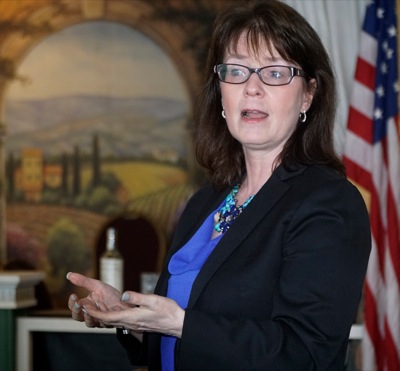Thursday, October 12th, 2017
Hurricanes expected to boost prices
Storms damage industries
By Sydney Albert
CELINA - When hurricanes Harvey, Irma and Maria made landfall along the Gulf Coast and in Puerto Rico, the storms disrupted supply chains and damaged industries in ways that officials predict could have far-reaching effects across the United States.
According to a report from the Florida Department of Citrus, officials were still trying to quantify the Hurricane Irma's impact on the local citrus industry as of Oct. 5, but it is predicted that the storms had "significant" impact. Due to the size and path of the storm, the entire Florida citrus industry was affected, the report said.
Early reports of storm-related damage mentioned knocked-down fruit, uprooted trees and flooded orange groves, with some growers reporting anywhere from 50-75 percent of fruit having been knocked from their groves.
"With supply affected, prices will most likely increase slightly. However, it may take some time for the prices to increase at your local grocery store," read a statement from the department.
Sugarcane, cotton and dairy industries in the Southeast also were affected by Irma, according to reports from the U.S. Department of Agriculture's Economic Research Service. Cotton also was hard-hit when Hurricane Harvey hit Texas, the largest cotton-producing state.
It will still take months or even a full year to get final figures on Texas' agricultural losses to Harvey according to a report put out by the Food Institute, but Gene Hall of the Texas Farm Bureau believes the state's cotton farmers alone lost at least a fifth of the crop. Rice farmers in the area also weren't able to harvest crops due to flooded fields.
Partly due to reconstruction efforts, demand and prices for lumber are up, said Benn Gann, vice president of legislative and political affairs at the National Lumber and Building Material Dealers Association.
"I don't think it's one thing, but obviously you have a few things happening that's creating an environment where prices have gone up," Gann said.
Along with demand from the areas hit by hurricanes, price hikes also are likely due to an ongoing lumber dispute between the U.S. and Canada as well as wildfires in British Columbia and the Pacific Northwest, he explained.
Gann said building materials aren't in short supply, with dealers and builders still able to get products they need but admitted it had become more challenging due to the hurricanes, citing examples where some supplies were being diverted to rebuilding efforts. Along with price hikes, suppliers could expect longer wait times on some shipments due to the string of disasters.
Coldwater Lumber President Jeff Wenning said he felt that most lumber was more difficult to get recently, with longer lead times, and felt that trend would likely continue for the rest of the building season.
"Pricing seems to have moved up 10-15 percent on most products," he said. "Some of the mills aren't even quoting yet."
Joe Ranly of Grand Lake Builders Supply said he'd seen price hikes for petroleum-based products, especially PVC pipes and drainage pipes, with some prices rising 7 percent. He also noted the longer lead times for supplies.
"Generally, if you look at the price of a barrel, that itself is something that was largely untouched. However, refined products - refineries had to be shut down in the Gulf of Mexico and in Texas, and that is where you start to see the fluctuations of price," said Shawn Bennett of the Ohio Oil and Gas Association. "You're beginning to see those (prices) start to come back down because those refineries are getting back to operational and that's very important for the economy."
Bennett pointed out that while the gas prices had some upswing right before and after the hurricanes hit, prices for crude oil and natural gas have not spiked as they did during past storms such as Katrina and Rita.
"Largely that is contributed to more diversification in our production here in the United States. Instead of a lot of offshore Gulf of Mexico-based production, a lot of that production, especially in oil, is coming in land-based operations … This go-around, there is much more stability in the marketplace given the diversification of operations."




